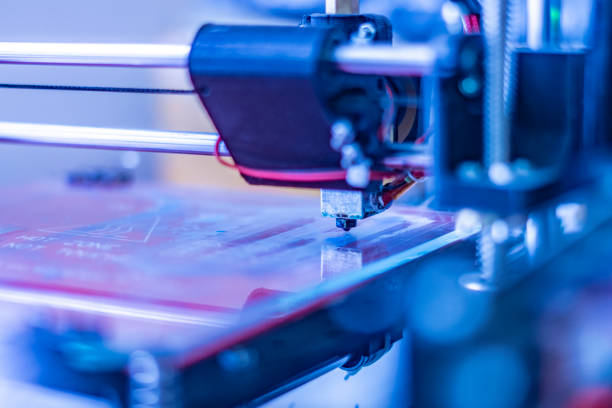What To Look For When Purchasing A 3d Printer

3D printing, and in turn 3D printers, have exploded in popularity. The
amazing devices were previously reserved for the most elite, but now everyone
can print 3D at home. Like any purchase particularly in the realm of technology,
it's important to pay attention to the appropriate features. This buying guide
can help you identify the top 3D printers.
How to Buy a 3D Printer.
Although the cost for even a budget 3D laser scanner is
high, purchasing a 3D printer is worth the investment. A 3D printer provides an
almost limitless amount of possibilities for creating household objects. You can
design replacement parts for furniture, and prolong the life of the objects in
your home.
3D Printer Guide to Purchase What to Look for when Purchasing a Printer
There are a lot of factors to think about when buying the 3D printer. These
are the main features to look out for when you purchase a 3D printer
Self-levelling beds. resin printers, and filament and. printers.
Substance vs. Filament 3D Printers
It is important to determine if you would like an 3D printer that is made of
resin or filament. Both are excellent and should satisfy basic users. The most
common 3D printer is the filament. FDM, also known as fused deposition modeling
printing melts down a piece of plastic, also known as filament. The filament is
then melted, is then placed on hotend. Then, the material is placed
layer-by-layer until the final print can be made. If using an FDM printer, the
filament is printed starting with the bottom layer , and gradually builds up
from there.
Resin printing is, however, uses a liquid resin. The build plate lowers down
into the resin vat and then uses a light source to cure its liquid resin into
layers. They are more precise than FDM printers and offer better quality. But,
this comes with a cost. This includes both monetary and expensive expenses.
Resin is a nasty substance, making set up and cleanup a nightmare. Resin
printers are generally more expensive. Still, certain affordable resin printers
are available.
3D Printer Noise
The sound of 3D printers is a huge factor. There is no way that 3D printers
3d printed products is completely quiet, however some are more quiet than other.
Likewise, physical set up can impact the level of noise. The noise level of your
3D printer is important when printing within the bedroom. This is because
printing a tiny amount of material can be a matter of hours. Even if there's an
area specifically designed for 3D printing 3D printing sounds could be heard
throughout your home or by neighbours. Tricks such as setting your printer on a
flat surface, on the top of a yoga mat, or carpet, or dampening surfaces aid in
3D printer noise reduction.
Speed Printing
The speed of 3D printers is different. Resin printers tend to be slower than
FDM counterparts. The speed may not be as important for printing to have
pleasure. But for commercial purposes, 3D printing speed may be a greater issue.
In smaller print jobs, speed increases don't typically affect the quality of the
print. However, for larger prints speedier printing could be at the expense of
fine detail, and may even create problems such as vertical banding, or the
ringing. Stringing could be caused by low printing speeds. Whatever the case,
you'll need an printer that can achieve your desired speed of printing
specifications.
Self levelling Bed
A bed that self-levels is one of the most sought-after 3D printer features.
Bed levelling by hand is a real pain, a lengthy, difficult procedure. Unlevel
beds can cause damage to prints. Many prints have auto bed leveling options that
test various points of the bed in order to measure the distance between the bed
and the nozzle. Software adjustments ensure that the printer is printing at the
correct distance. Although some users might prefer bed-leveling using a manual
method, the auto-levelling bed that is designed for 3D printers is very simple
to use and speeds up the entire printing process. A bed that auto-levels is a
great pick for 3D printing novices.
Connection options for 3D printers
You'll need to send a 3D model to your printer before you are able to print
anything. This can be accomplished through several methods. The majority of 3D
printers have a method for connecting using a USB cable. 3D printers often have
the SD slot for cards or USB port that can be used to plug in a flash
drive.
Final Thoughts
When purchasing a 3D printer Files is a matter of thinking about your specific use cases, preferences, and needs. Resin printers tend to be more expensive than filament printers that compete however they offer superior fine detail quality. They're more slow than filament printers however. Print volume, noise level, printing speed, and bed levelling mechanism rank among the most important considerations. I like resin printers, despite the messiness, smell, and slow speed. The quality of budget resin printers usually surpasses those of high-end and mid-range filament printers.
Comments
Post a Comment